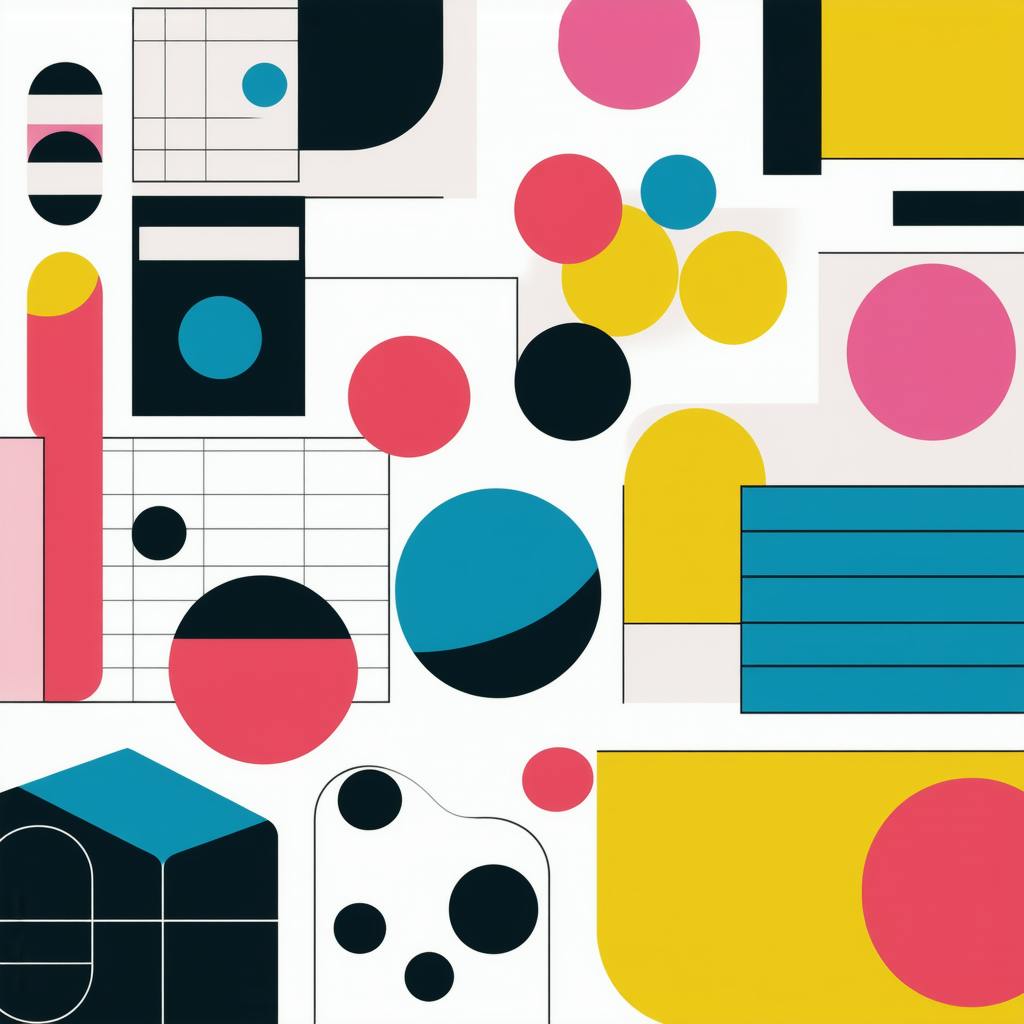In a world overflowing with visual stimuli, making a mark requires more than just talent; it requires boldness. Bold graphic design styles are pivotal in creating an unforgettable visual impact that resonates with an audience. From electric colors that catch the eye to unique typography that speaks volumes, these design styles are not just a choice—they're a statement. But how does one navigate the vibrant world of bold graphic design? Let's dive into the essentials using the 5Ws and H framework to explore how these styles make a lasting impression.
Who Uses Bold Graphic Design Styles?
Bold graphic design styles are utilized by a wide array of creatives, ranging from seasoned graphic designers to innovative newcomers eager to make their mark. Corporations aiming to reinforce their brand identity, advertising agencies looking to captivate their target market, and nonprofit organizations striving to raise awareness for causes are all key players who thrive on bold design elements. In essence, anyone wishing to communicate emphatically in a visually cluttered environment turns to bold graphic design.
What Constitutes Bold Graphic Design Styles?
Bold graphic design encompasses several elements that distinguish it from other design approaches. Key characteristics include vivid color palettes, dynamic typography, and stark contrasts that pop visually. Designers often employ asymmetrical layouts, oversized imagery, and experimental typography to create designs that are as expressive as they are memorable. Whether through a minimalist or maximalist approach, the common denominator remains the same: the impact.
When Did Bold Graphic Design Styles Become Prominent?
The evolution of bold graphic design styles can be traced back to pivotal art movements such as Pop Art in the mid-20th century, characterized by its vibrant colors and striking imagery. However, the digital age has truly catapulted bold graphic design into mainstream prominence. As digital platforms and social media have evolved, the need for eye-catching design that can cut through the digital noise has intensified, making the audacious nature of bold graphic design ever more relevant today.

AI made with Heather Crank
Where Are Bold Graphic Design Styles Most Effective?
Bold graphic design thrives in environments where grabbing attention quickly is crucial. These styles flourish across digital landscapes, from social media graphics and website design to interactive ads and mobile app interfaces. Offline, you’ll find bold designs in print posters, billboards, and packaging where the quick communication of ideas is paramount. Wherever there's a need to stand out and communicate swiftly with an audience, bold design holds sway.
Why Choose Bold Graphic Design Styles?
Choosing bold graphic design styles is an effective strategy for creating a visual hook that draws audiences in and leaves a lasting impression. Bold designs drive engagement by being memorable, often creating an emotional response or forging a strong connection with the viewer. For brands, this translates to stronger brand identity and increased consumer recognition. In an era where attention spans are fleeting, bold design captures and holds that elusive gaze.
How to Implement Bold Graphic Design Styles?
Implementing bold graphic design styles requires a thoughtful approach to balance and alignment. Here are some key steps:
- Color Theory: Use bold colors strategically to evoke emotions and highlight important information. Contrasting colors can create a stunning visual effect, while complementary colors can add harmony and balance.
- Typography: Select fonts that are not only visually striking but also readable. Experiment with size and placement for emphasis, but always prioritize clarity.
- Imagery and Layout: Incorporate large and impactful imagery to draw the viewer in. Utilize asymmetrical layouts to create dynamic and engaging compositions that guide the viewer's eye.
- Consistency: While experimentation is encouraged, maintain visual consistency to ensure that the design remains cohesive and aligns with the brand’s message.
FAQ: Bold Graphic Design Styles
Bold graphic design styles can drastically transform a message, making it more engaging and impactful. Whether you’re a budding graphic designer or a seasoned professional, understanding how to effectively use bold design styles is crucial. Here’s a comprehensive FAQ guide to help you navigate this vibrant aspect of graphic design.
What Are Some Examples of Bold Graphic Design Styles?
Bold graphic design styles are characterized by their striking appearance and strong visual impact. Here are some popular examples:
- Minimalism with Impactful Elements: While minimalism focuses on simplicity, incorporating striking colors or large typography can create a bold statement.
- Retro and Vintage: These styles often use bold typography, vibrant colors, and prominent textures to create a nostalgic yet impactful design.
- Pop Art: Inspired by the art movement of the same name, this style uses bright colors, thick lines, and repetition to garner attention.
- Memphis Design: Recognized for its use of geometric shapes and vibrant patterns, Memphis Design is inherently bold and playful.
- Brutalism: Characterized by stark aesthetics, bold typography, and sharp contrasts, brutalism can be unexpectedly bold in a digital context.
- Glitch Art: Utilizing digital errors to create an “imperfect” look, this style is both bold and contemporary, often making a disruptive statement.
How Can Bold Graphic Design Styles Improve Visual Impact?
Bold graphic design styles can amplify visual impact in several ways:
- Attracting Attention: Bold elements capture the viewer's attention quickly. Large, striking visuals are more likely to stand out in crowded spaces.
- Enhancing Message Clarity: Bold designs simplify complex messages, making them easier for audiences to understand at a glance.
- Creating Memorable Impressions: The distinctive nature of bold styles helps in creating a lasting impression, aiding in brand recognition and recall.
- Eliciting Emotional Response: Colors, typography, and imagery in bold designs evoke emotional reactions, enhancing engagement with the audience.
- Establishing Brand Identity: For brands seeking to be perceived as innovative or unconventional, bold design styles communicate a clear, powerful identity.

AI made with Heather Crank
What Are the Techniques Used in Creating Bold Graphic Design Styles?
Creating bold graphic designs involves several key techniques:
- Vibrant Color Palettes: Using contrasting and vibrant colors to create visual interest and enhance thematic elements.
- Oversized Typography: Implementing large types not only attracts attention but also reinforces the message.
- Dynamic Layouts: Employing unconventional layouts to break the monotony and guide the viewer’s eye through the design.
- Strong Imagery: Utilizing impactful images or illustrations that are likely to leave an impression.
- Contrasting Elements: Integrating high contrasts between elements (such as background and text) to ensure readability and interest.
- Textural Details: Adding textures can heighten depth, contributing to a more captivating visual experience.
What Factors Should Be Considered When Choosing Bold Graphic Design Styles for a Project?
When integrating bold graphic design into a project, consider the following:
- Purpose and Message: Ensure that the bold style aligns with the project’s objective and strengthens the intended message without overshadowing it.
- Target Audience: Different audiences have different aesthetic preferences; bold design may resonate more with younger, more adventurous demographics.
- Brand Identity: Consistency with a brand’s established identity is critical. The design should complement and enhance brand values and personality.
- Medium and Context: Consider the platform and medium where the design will appear. Bold styles may differ in digital versus print mediums.
- Cultural Sensitivity: Be aware of cultural implications and ensure the design is appropriate for diverse audience groups.
- Balance and Harmony: While bold designs are meant to stand out, maintaining balance ensures that the design remains cohesive and not overwhelming.
By choosing and applying bold graphic design styles thoughtfully, you can create designs that captivate, communicate, and leave a lasting impression. Whether through color, typography, or layout, bold design styles can revolutionize how information is perceived and retained.
Conclusion
Bold graphic design styles are much more than visual appeal; they are a means to communicate powerfully and memorably in a saturated visual world. Whether it’s through vibrant colors, daring typography, or striking imagery, bold design offers a unique approach to making a statement. By understanding and implementing the elements discussed, designers can harness these styles to create works that not only attract but also linger in the audience’s mind, thus amplifying the message they wish to convey.


